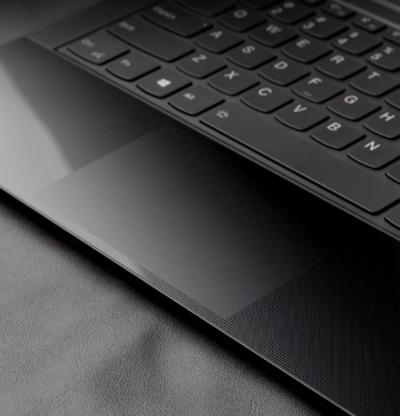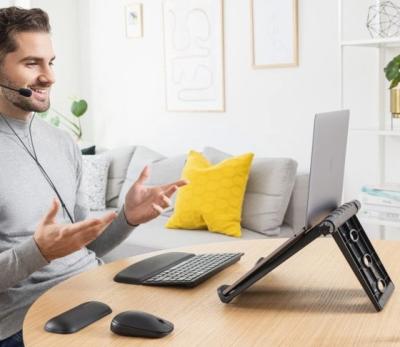This year is not the year of the personal computer. But it’s not the first time the PC market has slumped horribly. But what will spur its next comeback?
A decade ago, PC makers experienced their worst quarter in history with shipments in Q1 2013 down 13.9% – the biggest drop since research firm IDC began tracking the data in 1994. The first quarter decline for 2023 was even more precipitous, with worldwide personal computing device shipments descending 25.8% year over year in the first quarter of 2023, according to IDC.
The research firm cited weak demand, excess inventory, and a worsening macroeconomic climate as contributing factors for the market woes. Global PC shipments contracted 28.8% compared to the same quarter in 2022, while tablet shipments declined by 19.4% year over year.
A downswing in PC purchases isn’t surprising after the pandemic-driven furor to equip remote workers when Covid hit, but it led to some serious losses for some tech heavyweights – not just PC makers themselves. Intel Corp.’s Q4 2022 revenue fell to $14 billion, a 32% drop compared to the same quarter a year ago. The historically bad quarter for the company was attributed to the nosedive of PCs and servers, including weak PC demand in consumer and education and PC OEM inventory reductions.
Advanced Micro Devices (AMD) has seen a decline as well, having just reported a revenue decline of 18% in its fiscal second-quarter earnings for 2023. The company’s processor business has slowed in recent quarters and the decline is attributed to the deep slump in the global PC market. AMD CEO Lisa Su does expect the PC market to grow seasonally in the second half of the year with better inventory levels across the supply chain.
RELATED: AMD Q2 revenue down, but AI keeps spirits, expectations high
But how much opportunity for growth is there for PCs, be it desktops or laptops?
Jim Handy, principal analyst with Objective Analysis, told Fierce Electronics in an interview that the PC market is returning to its pre-Covid norms, which was in fact a market that was already in a slow and steady downturn.
“The reason PCs are in the doldrums is because we are returning to the patterns that existed before Covid.” He said smartphone sales were relatively stagnant and PC sales were falling at a steady annual rate at roughly 3%. “We're getting back into that.”
Gaming machines and higher end laptops poised for some growth
Early in 2023, CES provided some indication of how the industry was looking to revitalize PC sales. One trend was that monitors are getting larger and higher quality to meet the needs of people transitioning to the home office as hybrid work continues. The gaming laptop appears to still have legs with vendors like Razr, Acer and Alienware all introducing models with 18-inch displays.
In fact, the global gaming PC market looks poised for growth, according to research recently released by ReportLinker.com, which said the market size is expected to reach $125.5 billion by 2030, rising at a market growth of 12.6% CAGR during the forecast period. Casual gamers are growing globally as both younger and older generations are drawn to video games, according to the report, and the segment accounted for $8.2 billion in revenue in 2022.
Aside from gaming machines, the potential for growth is in the higher end segment after an overall growth in sales in 2020 and 2021 as workers geared up to work from home followed by a decline in 2022, according to Bob Yang, executive director for business development at Taifang Technology in Beijing. “That situation will continue throughout 2023.” The first quarter was quite rough for PC makers, with an expectation there will be in uptick in the second half of the year, he said in an interview with Fierce Electronics.

Taifang makes force sensing touchpads and functional surfaces for several major PC vendors, including Lenovo and LG, and Yang said the growth in artificial (AI) capabilities that make people more productive and efficient are going to drive hardware requirements in laptops and desktops, including audio, video, and graphics upgrades. He said this trend is cause for optimism for the PC market in 2024 and all the way to 2026.
Yang said vendors are going to be looking to increase margins, which means less of a focus on low-cost PCs and looking ahead rather than just chasing market share today. “They are doing their best to create innovation.” He said this is good news for components suppliers, including Taifang. “They are trying to increase the features of the PC and make the PC more attractive to end users.”
Yang said increased margins means profits to fuel an innovation cycle. “Just ask Apple about margins. They'll take a secondary position in volume any day and go for the margins.” LG is similar, he said, in that it has a small market share and is focused on innovation, citing Taifang’s launch of its ForcePad solution that’s been designed into LG laptops, which have a price tag of $1,500. “It's a very light, slim, beautiful, elegant design.”
Yang said the future of PCs is lightweight and seamless to meet user expectations that are inspired by smartphones as well as automotive dashboard displays and functional surfaces, where Taifang’s technology has a lot of applications.
Desktop setup nerds want cool peripherals in the workspace
Peripherals and accessories may help make the PC more exciting again, according to Yuji Wakabayashi, regional product manager for North America at Kensington Technology. The company has been around for 40 years and has slowly expanded and transformed its portfolio. In an interview with Fierce Electronics, he said the company is starting to launch products like silent mechanical keyboards for the professional market – a product that was previously used mainly by gamers. “We know people are out there that love the tactical feel of the mechanical keyboard.”
Wakabayashi said Kensington is updating its line of track ball mouses to have internal batteries and generally make its accessories more environmentally friendly while taking advantage of recycled plastics.
The big trend, he said, is “desktop setup nerds,” as workers look to have the ideal space to be productive. Companies had been providing equipment or a stipend for their employees who work from home, but now that people are coming back to the offices, hybrid workers are responsible for streamlining their own workspaces at home, Wakabayashi said.

A hybrid worker might complement their company-provided laptop with a nice big monitor, trackball mouse and mechanical keyboard, all connected through a dock, he said. “Docking stations have become a big, a big product over the last few years because you're able to connect all your peripherals into that docking station,” Wakabayashi said. “You can't work just off your laptop alone. It's just not productive. It's not comfortable, it's not ergonomic.”
And it’s not just a mouse and a keyboard or furniture that dictates ergonomics – the right external monitor at the right height and position are a critical element of a home setup. “You never want to be looking down.”
Wakabayashi said people will invest in peripherals because they know it will make them more productive, and employers are more likely to provide an entry-level mouse and keyboard. “We have a whole range of products that will help employees set up their desks.”
Upgrading for performance demands a killer app
Peripherals outside the PC can add to user experience, but traditionally it’s been the guts of the computer in the form of performance and storage capacity that have been key attributes of any computer – both in terms of what they come with out of the box and the ability to expand the memory or upgrade the hard drive.
However, Objective Analysis’ Handy said that most people are walking away from doing their own DRAM upgrades, and vendors are increasingly soldering the memory into the computer rather than using DIMM slots, he said, which comprises a lot of laptop sales today.
Not being able to accelerate a computer with more DRAM is a barrier to making the PC sexy again, Handy said, and even when a computer comes with a lot of memory, it tends to attract a niche crowd. Conversely, not being able to upgrade an existing machine could push people to replace it if they need more performance.
He said SSDs have become increasing common in laptops as they become cheaper per bit – about six cents a gigabyte – and higher--in capacity, and it’s something people do pay attention to. “Having huge SSD storage would make a PC much more attractive.”
But the biggest barrier to making computers an appealing purchase is more imagination from the operating systems, whether it’s the Apple OS or Microsoft Windows, Handy said. “Everything that Microsoft is working on right now are extensions of stuff that was invented decades ago. They don't have anything new and exciting.” Apple used to be blazing new trails all the time, he said, but the iPhone was probably the company’s last true game changer.
Handy said applications with a lot of graphics content that really capture people's imagination would drive a lot more hardware sales – generative AI and 3D graphics, for instance. “They would end up replacing their computers.”
But when it comes staying connected or entertained, the PC has largely been replaced by smartphones, Handy said, and outside of work, a laptop or desktop computer isn’t necessary if you’re not handling documents such as spreadsheets. “Everything that they need to do – the Googling and the texting – is just as easy to do on the cellphone as it is on a computer.”